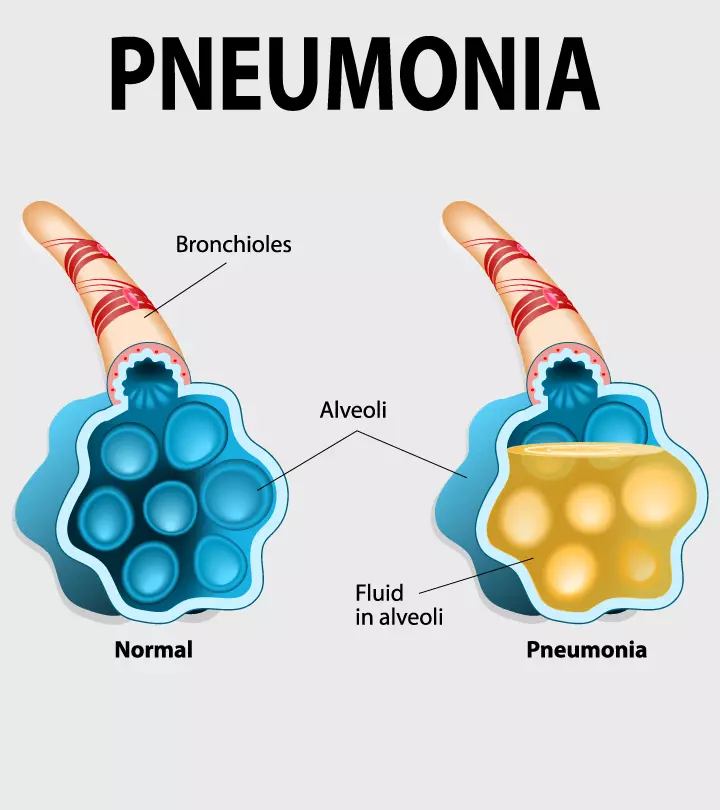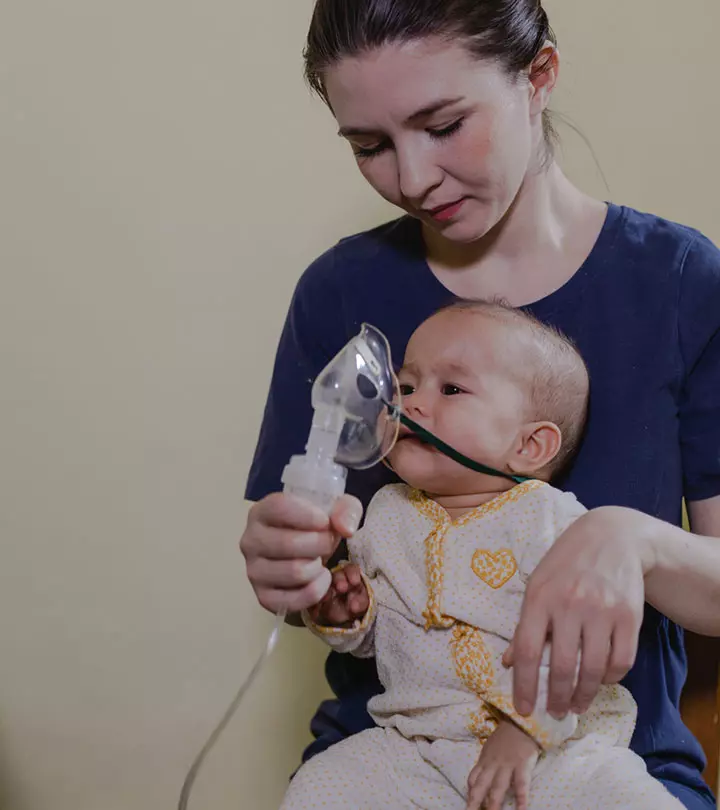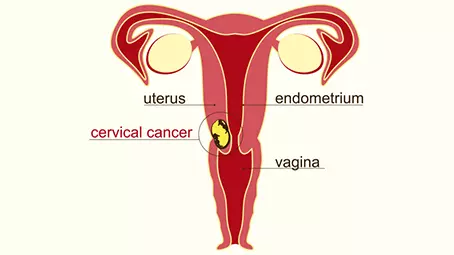
Image: ShutterStock
Asymmetrical tonic neck reflex (ATNR), or tonic neck reflex, is one of the primitive reflexes present in an infant. It differs from the symmetrical tonic neck reflex (STNR) present in later infancy stages. Several actions and responses of a newborn are reflex-based to specific stimuli. A reflex is a muscle’s automatic reaction or response to a stimulus (1) (2). Newborns have several innate reflexes at birth known as primitive reflexes. These last for several weeks or months and disappear as the baby grows older. In this post, we acquaint you with the causes, purpose, and signs of asymmetrical tonic neck reflex in babies and some red flags to be alert about.

Key Pointers
- The tonic neck reflex appears between one and four months of age and lasts approximately seven months.
- It is vital for a baby’s gross motor skills, hand-eye coordination, and posture control.
- Not having a tonic neck reflex is a cause of concern and may indicate neuronal dysfunction.
- The condition can be improved through reflex integration therapy that consists of targeted games, exercises, and activities.
What Is Tonic Neck Reflex?
Tonic neck reflex is present at birth and occurs when the baby lies on the back
. When their head turns to one side, the arm on the side to which the head turns involuntarily stretches out. The other arm bends at the elbow, and the baby may clench their fist.
Since the reflex resembles a fencer’s stance, it is also called a fencing reflex (3). This reflex is critical for a baby’s eye-hand coordination, control of posture, left-right discrimination, and gross motor skills (4).
Is Tonic Neck Reflex Normal?
Yes, tonic neck reflex is normal during the initial few months of the baby’s life. This reflex pattern develops in the fetus during the 18th week of pregnancy. The reflex usually becomes prominent between the ages of one and four months old and disappears by the age of seven months (3).
Older babies, children, and adults can also take the tonic reflex stance, but it is a voluntary action rather than an involuntary reflex (5).
What Causes Tonic Neck Reflex?
Tonic neck reflex is one of the several primitive reflexes of infancy. Primitive reflexes are natural involuntary responses ingrained in the baby’s nervous system. They occur due to specific stimuli and only for a fixed duration during infancy.
Several primitive reflexes serve certain purposes since the baby’s gross motor skills are inadequately developed. Therefore, the presence of this primitive reflex in babies is a sign of a healthy brain and nerve activity in the newborn (6).
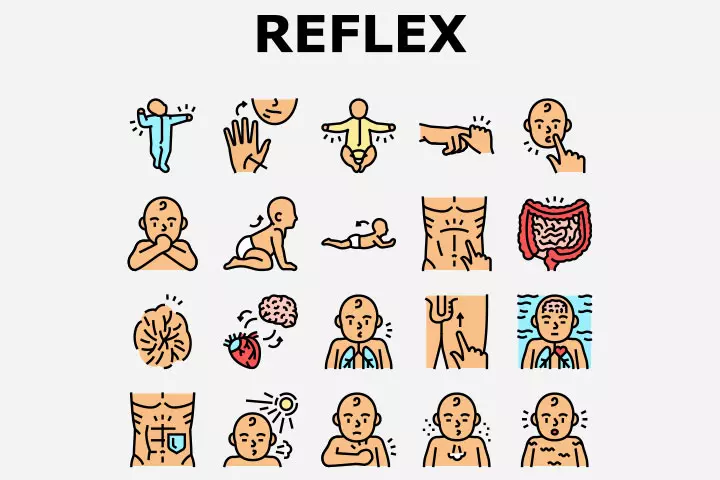
What If A Baby Does Not Have Tonic Neck Reflex?
If your baby does not display asymmetrical tonic neck reflex during infancy, speak to a doctor. Doctors check for the presence of primitive reflexes soon after birth to determine the healthy functioning of the nervous system.
 Quick fact
Quick factThe absence of primitive reflexes, such as tonic neck reflex, may indicate damage or poor development of the baby’s nervous system (7). It may also suggest dysfunction of the central or peripheral nervous system. There is no single reason why a baby may have congenital nervous system problems. Genetic and gestational factors, such as maternal lifestyle during pregnancy, could be the influential factors.
The doctor may suggest multiple tests to determine the underlying cause of the asymmetrical tonic neck reflex’s absence. Relevant treatment or management could be suggested based on the diagnosis.
What Happens When Baby Retains ATNR?

It is considered atypical development if the baby shows ATNR after seven months. It may suggest the absence or poor development of reflex integration — an automatic process where the matured higher brain centers inhibit the reflexes and modify them to become voluntary actions (8). Babies with poor reflex integration tend to display problems with fine and gross motor skills and cognitive abilities. The presence of the ATNR can make rolling over difficult. The child’s arm will straighten when they looks in the direction they wish to roll. Rolling is an important milestone on the route to meeting gross motor milestones, such as babies crawling.
It may be sometimes difficult to tell if the asymmetrical tonic neck reflex in babies and toddlers is voluntary or reflexive. You may check for the presence of the following conditions that could also occur due to poor reflex integration (9) (10).
- Poor eye tracking
- Poor hand-eye coordination
- Difficulty crossing midline (Left-right confusion)
- Awkward or clumsy movements
- Issues with throwing and catching
- Difficulty in crawling, standing, or walking
Long-Term Effects Of Retained ATNR
If asymmetrical tonic neck reflex persists through the baby’s childhood, it may indicate poor reflex integration, which may also cause the following issues (11).
- Poor learning abilities and dyslexia
- Handwriting problems
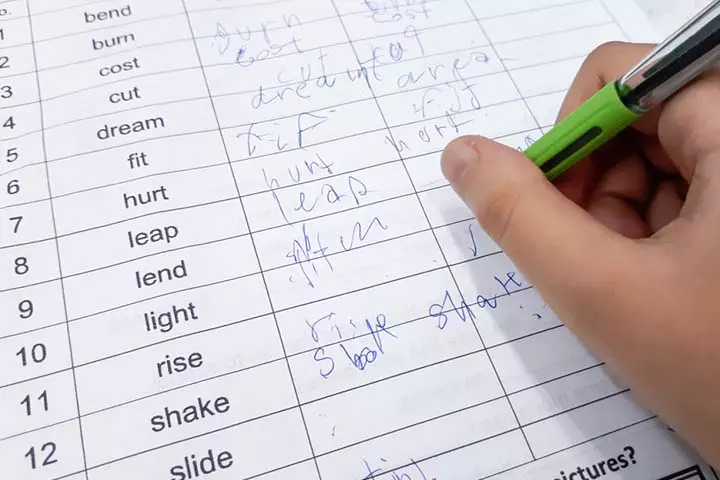
- Difficulty in putting thoughts in written words
- Difficulty telling the time
- Difficulty in running, cycling, and balance
- Difficulty maintaining body’s balance
The gross motor difficulties with retained ATNR include eye-hand coordination (throwing and catching) activities where both hands are used simultaneously and need to be coordinated. In cases where the ATNR persists but is not initially diagnosed, the child can start having problems in the school-going years. This can affect reading and writing abilities.
 Research finds
Research findsHow Is Retained Tonic Neck Reflex Treated?
The treatment of retained tonic neck reflex and other primitive reflexes could depend on the underlying cause and its severity. A common way to improve a child’s voluntary actions and inhibit primitive reflexes is through reflex integration therapy.
The therapy usually contains a series of exercises and games that stimulate coordination between various parts of the brain. It ultimately helps improve the functions of the higher brain centers, which are normally responsible for inhibiting primitive reflexes.
A therapist may design the therapy based on the symptoms shown by the child and its intensity. Below are some of the common activities used in reflex integration therapy (12).
- Motor skill development games: Sorting objects, threading pearls, clapping games, drawing, and dancing
- Integration exercises: Exercises involving walking, cycling, aiming and throwing, and catching and throwing
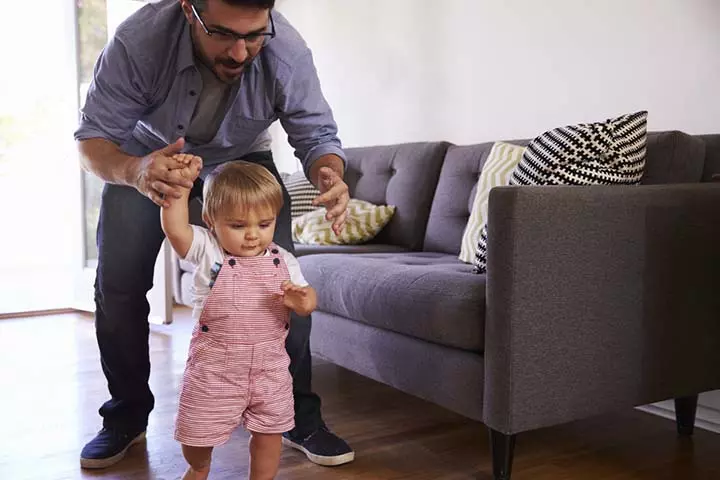
- Functional activities: Midline crossing activity, pushing a shopping cart, turning the head, crawling through tunnels, and walking while turning the head
Frequently Asked Questions
1. How do you test for an asymmetrical tonic neck reflex?
To test your baby’s asymmetrical tonic neck reflex, have them lie on their back and gently turn their head to one side. If their leg and hand on the side to which the head has been turned extend while the other arm and leg flex, the reflex is still active (13).
2. What is the difference between asymmetric and symmetric tonic neck reflexes?
The asymmetric tonic reflex helps babies assume the fencer pose. It aids in the development of hand-eye coordination and gross motor skills. In the symmetric tonic neck reflex for babies, when the child is placed face-down with their neck bent forward, their arms flex while their legs straighten. Further, when their neck is extended, their arms will straighten while their legs bend. This reflex aids in crawling (14).
3. How does the asymmetrical tonic neck reflex help with balance and coordination?
The asymmetric tonic neck reflex is an involuntary response of the hands and legs to the movement of the neck. As the head rotates to one side, the hand and leg on the same side extend while the limbs on the opposite side retract in response. Thus, this reflex is believed to aid in developing and training hand-eye coordination and balance in movement, along with attentional control (19).
Asymmetric tonic neck reflexes are a natural part of a baby’s neurological development and are not a cause for concern straight away. However, if your kid does not have tonic neck reflexes, you should consult a specialist for a proper diagnosis. If the asymmetric tonic reflexes persist after seven months, the doctor may recommend a few developmental activities or exercises to address the issue. To avoid difficulties, take good care of your child and encourage them to participate in basic activities.
Infographic: Consequences Of Retained ATNR In Infants
The asymmetrical tonic neck reflex (ATNR) is a primitive infant reflex that supports motor and cognitive development and hand-eye coordination. This reflex typically disappears around six to seven months of age. If retained, the ATNR can have long-term effects on a child’s learning, impacting their daily life. Explore the following infographic to learn more about the potential impact of a persistent ATNR.
Some thing wrong with infographic shortcode. please verify shortcode syntaxReferences
1. Infant reflexes; U.S. National Library of Medicine
2. Newborn Reflexes; American Academy of Pediatrics
3. Newborn Reflexes; Stanford Children’s Health
4. Cristine K. Arcilla and Renato C. Vilella,Tonic Neck Reflex; U.S. National Library of Medicine
5. Tonic Neck Reflex; ScienceDirect
6. Reflexes in Newborns; Cincinnati Children’s Hospital
7. Alexa K. Modrell andPrasannaTadi, Primitive Reflexes; U.S. National Library of Medicine
8. Primitive Motor Reflexes & Their Impact on a Child’s Function; Tools to Grow
9. Martin McPhillips and Julie-Anne Jordan-Black, Primary reflex persistence in children with reading difficulties (dyslexia); U.S. National Library of Medicine
10. Ewa Z. Gieysztor, Anna M. Choinska, and MalgorzataPaprocka-Borowicz, Persistence of primitive reflexes and associated motor problems in healthy preschool children; U.S. National Library of Medicine
11. Asymmetrical Tonic Neck Reflex; The Institute for Neuro Physiological Psychology
12. Susan Stallings-Sahler, Gustavo Reinoso, and Stacy Frauwirth,Neurodevelopmental Soft Signs:Implications for Sensory Processing and Praxis Assessment; American Occupational Therapy Association
13. Cristine K. Arcilla and Renato C. Vilella; Tonic Neck Reflex; National Library of Medicine (2025)
14. Tonic Neck Reflex; National Library of Medicine
15. John A. Herring; The Orthopaedic Examination: A Comprehensive Overview; Science Direct
16. What is Cerebral Palsy?
17. Muscle Weakness (Hypotonia)
18. Pediatric Muscular Dystrophy; Children’s National Hospital
19. Arrin Christine Brummett; IMPROVING INATTENTIVENESS THROUGH ASYMMETRIC TONIC NECK REFLEX INTEGRATION EXERCISES: A QUANTITATIVE, QUASI-EXPERIMENTAL STUDY; Liberty University
Community Experiences
Join the conversation and become a part of our nurturing community! Share your stories, experiences, and insights to connect with fellow parents.
Read full bio of Dr. Wayne Hough
Read full bio of Dr Bisny T. Joseph
Read full bio of Rohit Garoo
Read full bio of Shinta Liz Sunny






